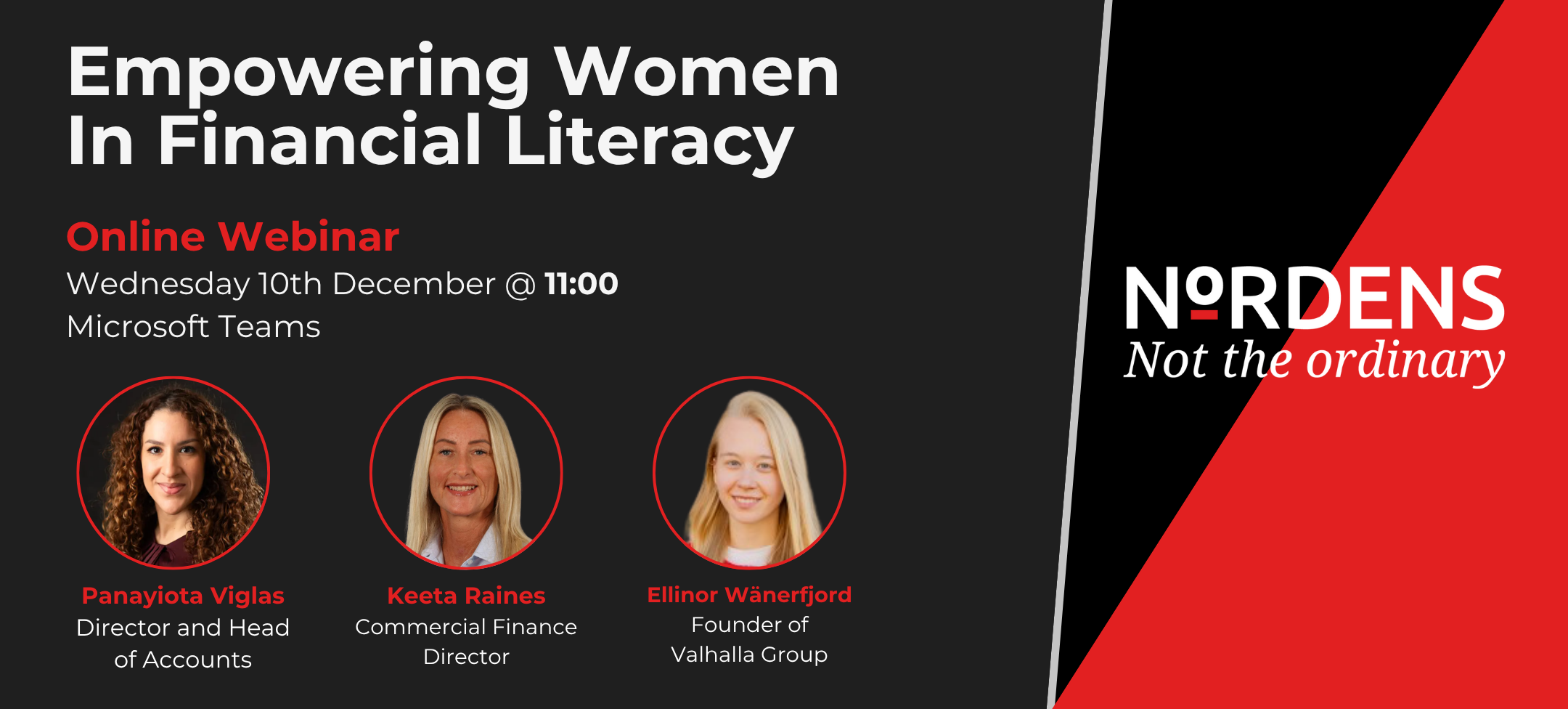Strategic advisory services are undoubtedly crucial tools for businesses to navigate complex challenges, identify growth opportunities, and make informed decisions. More and more businesses of all shapes and sizes are taking the opportunity to work with strategic advisors, especially here at Nordens.
We pride ourselves on working in collaboration with business owners to achieve their goals, both personally or professionally. Whether you’re looking to sell or exit your business, require an in-depth plan to turn things around, or just want someone to hold you and your goals accountable, our expert Strategic Advisory division features the expertise and knowledge to make all of this and more happen. To determine your circumstances, we even offer a complimentary consultation with our Director of Strategic Advisory, Joe Sword, where we can discuss your options and the overall health of your business so get in touch now!
As businesses increasingly rely on advisors like ourselves to guide their strategic endeavours, the question of measuring the return on investment (ROI) of these services becomes paramount. We delve into the multifaceted nature of measuring the ROI of strategic advisory, exploring both tangible and intangible outcomes, whilst examining the key metrics of what success really means…
Defining Strategic Advisory & Its Importance
Strategic advisory involves the collaboration between external advisors and a business’s leadership to formulate and execute strategies that align with the company’s long-term objectives. The external perspective offered by strategic advisors, coupled with expertise and industry insights, can provide valuable resources and ideas. Often these are things that internal teams might overlook due to their proximity and emotional attachment to the business’s operations.
What Are The Tangible Metrics To Measure Strategic Advisory Success?
Revenue Growth
One of the most direct ways to measure the impact of strategic advisory is through revenue growth. Advisors can help identify untapped market segments, product/service enhancements, and pricing strategies that can lead to increased sales. By comparing pre-advisory and post-advisory revenue figures, businesses can gauge the effectiveness of the strategies implemented.
Cost Savings
Strategic advisors can help streamline operations, optimise resource allocation, and identify cost-cutting opportunities. Measuring the reduction in operational costs, production expenses, or other relevant expenditure areas can provide a clear ROI indicator.
Market Share Expansion
Through market analysis and competitive benchmarking, advisors can assist businesses in expanding their market share. Monitoring changes in market share before and after advisory engagement can help quantify the impact on the company’s competitive positioning.
What Are The Intangible Outcomes Of Strategic Advisory?
Enhanced Decision-Making Processes
Strategic advisors contribute to more informed decision-making by providing unbiased insights and alternative perspectives. While difficult to quantify directly, businesses can assess the quality and speed of decision-making as a result of advisory influence.
Innovation and Adaptation
Advisors often introduce innovative ideas and solutions that can shape a company’s trajectory. Tracking the adoption of new strategies, products, or processes can indicate the level of innovation inspired by advisory services.
Risk Mitigation
Advisories assist in identifying and managing risks, both internal and external. While it’s challenging to quantify avoided risks, businesses can examine instances where strategic advisory prevented potential crises or minimised negative impacts. For example, during periods of economic downturn, or major geo-political shifts.
Cohesion
Advisors assist businesses in the development and efficiency of staff and team members, helping to create a cohesive atmosphere which can only benefit operations and growth. By offering business owner’s an aligned direction and plugging these communication gaps between management and staff, it also widens the scope in producing a clear and well-communicated common goal.
Measuring ROI: A Comprehensive Approach
Comparative Analysis
To measure the ROI of strategic advisory, conducting a comparative analysis between the pre-advisory and post-advisory periods is essential. This includes financial indicators like revenue, profit margins, and operational costs. This provides a well-documented and thorough account of the changes implemented and the success achieved.
Surveys and Interviews
Gathering feedback from key stakeholders involved in the advisory process can provide insights into intangible benefits such as improved decision-making and advisory effectiveness. This form of communication and feedback also sows the seeds for future successes, helping to rubberstamp a growth and positive mindset.
Case Studies
Analysing specific instances where advisory-led strategies led to quantifiable outcomes can serve as illustrative examples of ROI. These case studies provide in-depth detail about the type of work carried out and the structures and processes implemented, helping other business owners to see the success achieved and potentially collaborate with a strategic advisor. You can see a few of the case studies we’ve documented in one of our articles here.
Long-Term Impact
It’s useful to recognise that the impact of strategic advisory might extend beyond the immediate post-advisory period. Monitoring changes over an extended timeframe can reveal the full scope of its influence. Often, the true scope of strategic advisory and the core foundations set in a business can only be viewed in the long-term.
Summing Up
Measuring the ROI of strategic advisory services requires a holistic approach that considers both tangible and intangible outcomes. While metrics like revenue growth, cost savings, and market share expansion provide quantifiable indicators, intangible benefits like enhanced decision-making and risk mitigation are equally as significant. All of these contribute to the metrics of whether a business has achieved success through strategic advisory.
By employing a combination of comparative analysis, stakeholder feedback, case studies, and a focus on long-term impact, businesses can gain a comprehensive understanding of the value that strategic advisory brings to their operations. As the business landscape forever evolves, the ability to measure and demonstrate the ROI of strategic advisory will remain essential for informed decision-making and maximising the benefits of advisory partnerships.
Download & View Our Strategic Advisory Brochure Here
We hope this has outlined to you the processes in how to measure the success of strategic advisory for businesses. If you’d like to know any further information, or anything accounting related, please do not hesitate to get in contact with us at Nordens, where one of our trusted advisors would be happy to talk you through your query.









































































































































































































































































































































































































































































































